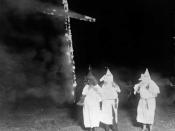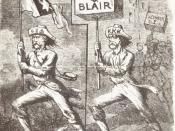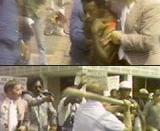The contrast between the new and changing attitudes and traditional values was unmistakably present during the 1920's. This clash between the old and the new had many roots and was inevitable. A new sense of awareness washed over minorities in our nation, especially blacks who began to realize that they were entitled to their own subculture, pursuit of success, and share of the American dream. This ideal was expressed by Langston Hughes in 'The Negro Artist and the Racial Mountain.' They were supported by the growing number of young, financially well-to-do liberals who formed the new intelligencia. Each group sought the use of logic and rational reasoning in their rethinking of reevaluation of society's current status. Still, they constituted a minority and their reformist views were not well-taken by the greater part of the population who had become accustomed to a certain way of thinking were not willing to budge, thus keeping the radicals silent.
Individualism was also partially suppressed by the succession of three traditionalist Republican presidents whose partiality to the strong was displayed by their strong backing of big business while discouraging the Labor Union movement. Literature was one medium by which the new intelligencia could express their views on impracticality and injustice of the social system and government in the 1920's.
Sinclair Lewis was one such author who used his writing to condemn the stale and outdated ways of thinking that were so widely popular in our nation during the 1920's. In addition to exposing the poor working conditions of most factory labor, particularly the meat-packing industry, he criticized the common man who could not think or act individually in his novel, Babbit, which was published in 1922. His description from the novel of the common man portrayed a person who acted in a manner that was...


